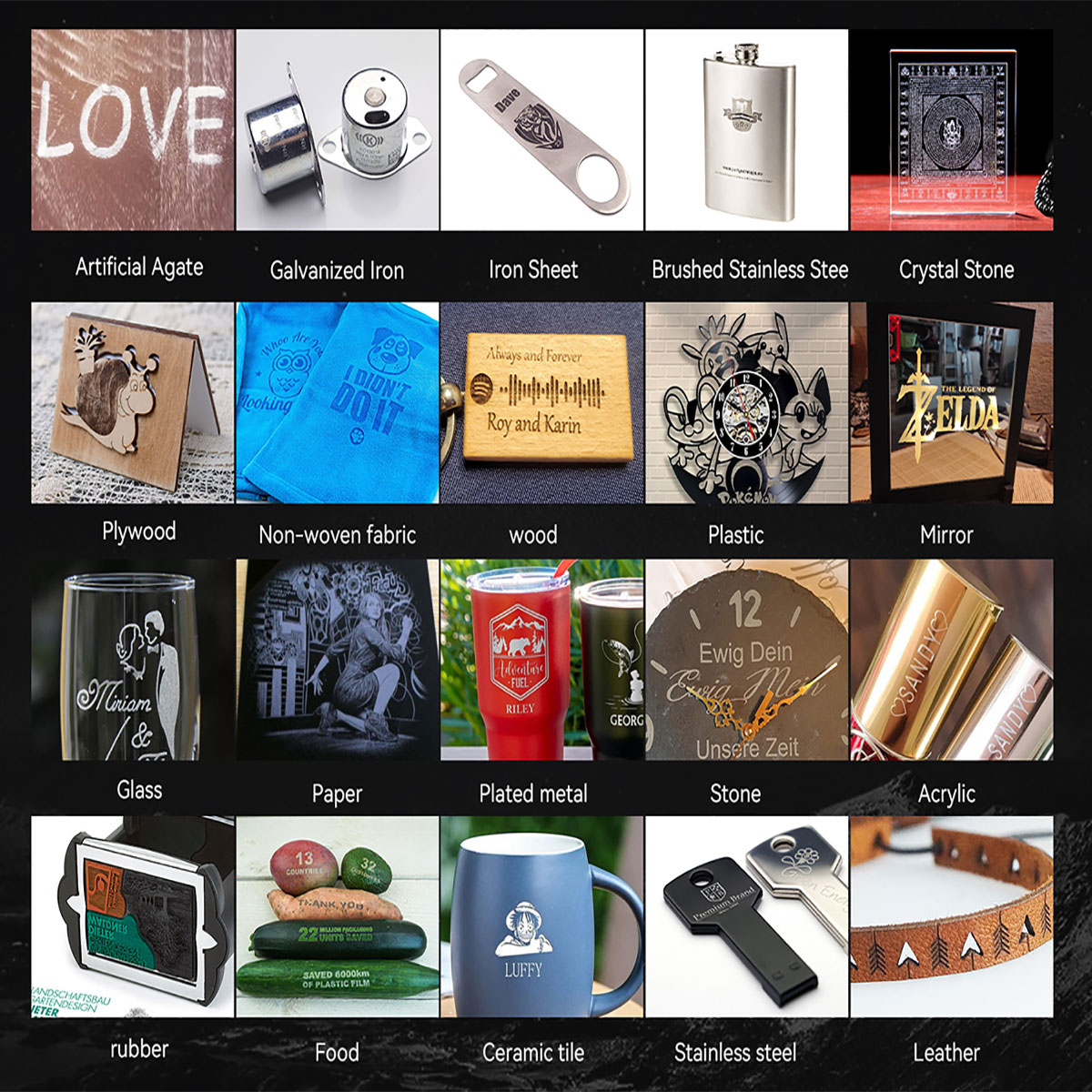Are you looking for the best laser engraving machine to take your at-home business to another level? We may have something valuable in store for you! Whether you are a DIY enthusiast, an aspiring home-based business owner, or even a newbie in the tech field, you must have heard of laser engravers. Laser engraving and cutting are emerging as a popular industry these days. It is not only demanded by product designers and small business owners to earn from their skill but even hobbyists to decorate their homes with their art.
l




What are Laser Engravers?
Laser engraving is a process that creates marks on parts and products by physically removing the surface of the material to expose a cavity that reveals an image at eye level. It’s slightly different from laser etching which involves melting the material’s surface to create patterns or images.
Lasers have a wide range of varying applications in different industries, from aerospace to medical and manufacturing. Once seen as a tool for industrial-based projects, laser engravers are now serving small businesses, DIY hobbyists, and ambitious crafters. Knowing how laser engraving works can allow you to master the art of laser engraving on different materials and surfaces.
A laser engraver is equipment used to engrave permanent marks on surfaces. It etches anything, from wood, stone, marble, tile, cardboard, aluminium and even glass to create unique designs.
Lasers have a wide range of varying applications in different industries, from aerospace to medical and manufacturing. Once seen as a tool for industrial-based projects, laser engravers are now serving small businesses, DIY hobbyists, and ambitious crafters. Knowing how laser engraving works can allow you to master the art of laser engraving on different materials and surfaces.
A laser engraver is equipment used to engrave permanent marks on surfaces. It etches anything, from wood, stone, marble, tile, cardboard, aluminium and even glass to create unique designs.

What’s the Difference Between Laser Engraving, Etching, and Marking?
Laser Engraving – As mentioned earlier, engraving uses laser beams to physically remove a portion of the surface area. This typically involves the use of a CO2 laser and is best used on materials like leather and wood.
Laser Etching – This is just a subset of engraving that primarily uses the heat of the laser to melt the surface of the material. The melted material then expands and causes a raised mark.
Laser Marking – Through the use of a low-powered beam, laser marking interacts with the surface of a material to slightly alter its properties or appearance. It can mark organic materials like wood, textiles, or cardboard with the use of a CO2 laser. However, if you want to mark metals or hard plastics, you need a stronger fibre laser machine to do the job.
Laser Etching – This is just a subset of engraving that primarily uses the heat of the laser to melt the surface of the material. The melted material then expands and causes a raised mark.
Laser Marking – Through the use of a low-powered beam, laser marking interacts with the surface of a material to slightly alter its properties or appearance. It can mark organic materials like wood, textiles, or cardboard with the use of a CO2 laser. However, if you want to mark metals or hard plastics, you need a stronger fibre laser machine to do the job.

Material for Laser Engraving
A laser tool can engrave or cut materials, these are its main functional processes. Therefore, common materials used for laser engraving include:
Wood: It is a popular carving material because it is cheap and readily available. Other than that, you can laser engrave and cut any type of wood for different effects. The most common wood types used for carving include plywood, MDF, solid wood/solid wood, natural wood, particleboard, HDF, and veneer.
Leather: This material, like fabric, can be customized by engraving. Engraved leather is in high demand and the most common engraved materials include natural leather, suede, synthetic, suede and Alcantara leather.
Acrylic: It is a durable, reliable and lightweight alternative to glass. There are two types of acrylic sheets, extruded and cast. Therefore, they respond differently to the engraving process. Cast acrylic sheets often produce a frosted white appearance compared to the original material. Extruded acrylic, on the other hand, usually stays clear because it doesn't create as much contrast.
Glass: It is one of the top laser engraving materials. Laser work can be done on all eyeglasses for aesthetically pleasing results. It could be wine glasses, bottles, vases and cups.
Marble and granite: These materials are mainly used for engraving photographs, this is because marble and granite are very effective in sculpting contrast. For a better aesthetic, use dark materials.
Bricks and Stones: They are great for carving items that will be exposed to different weather elements. This makes them ideal for engraving pieces for memorial sites and outdoor patios.
Metals: All types of metals can be engraved, but the most common include: stainless steel, iron, steel, brass, aluminum, and silver.
Wood: It is a popular carving material because it is cheap and readily available. Other than that, you can laser engrave and cut any type of wood for different effects. The most common wood types used for carving include plywood, MDF, solid wood/solid wood, natural wood, particleboard, HDF, and veneer.
Leather: This material, like fabric, can be customized by engraving. Engraved leather is in high demand and the most common engraved materials include natural leather, suede, synthetic, suede and Alcantara leather.
Acrylic: It is a durable, reliable and lightweight alternative to glass. There are two types of acrylic sheets, extruded and cast. Therefore, they respond differently to the engraving process. Cast acrylic sheets often produce a frosted white appearance compared to the original material. Extruded acrylic, on the other hand, usually stays clear because it doesn't create as much contrast.
Glass: It is one of the top laser engraving materials. Laser work can be done on all eyeglasses for aesthetically pleasing results. It could be wine glasses, bottles, vases and cups.
Marble and granite: These materials are mainly used for engraving photographs, this is because marble and granite are very effective in sculpting contrast. For a better aesthetic, use dark materials.
Bricks and Stones: They are great for carving items that will be exposed to different weather elements. This makes them ideal for engraving pieces for memorial sites and outdoor patios.
Metals: All types of metals can be engraved, but the most common include: stainless steel, iron, steel, brass, aluminum, and silver.
